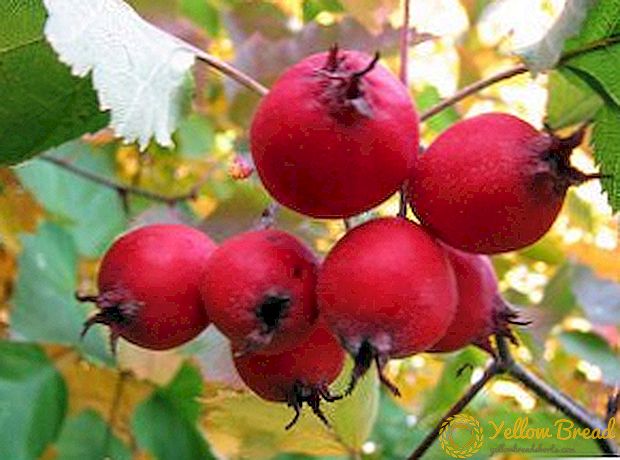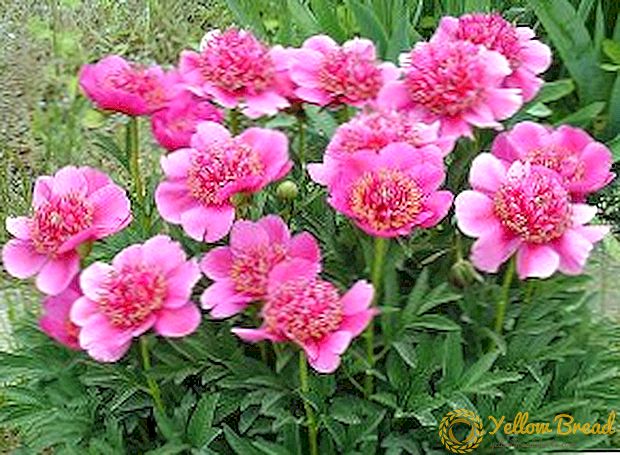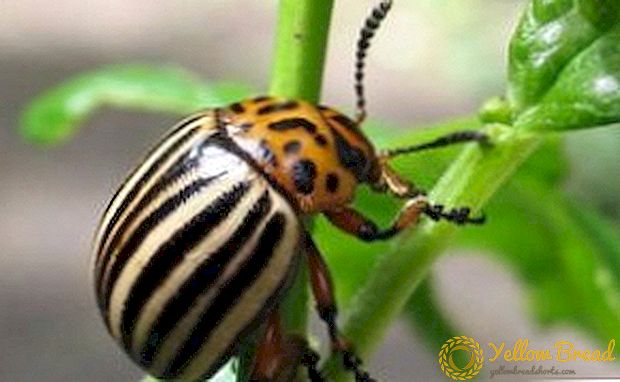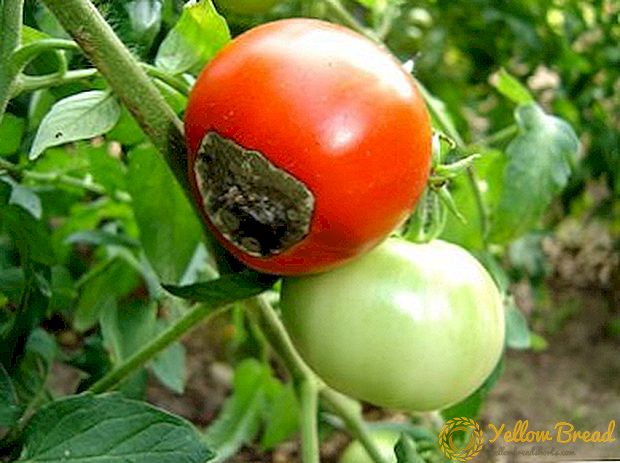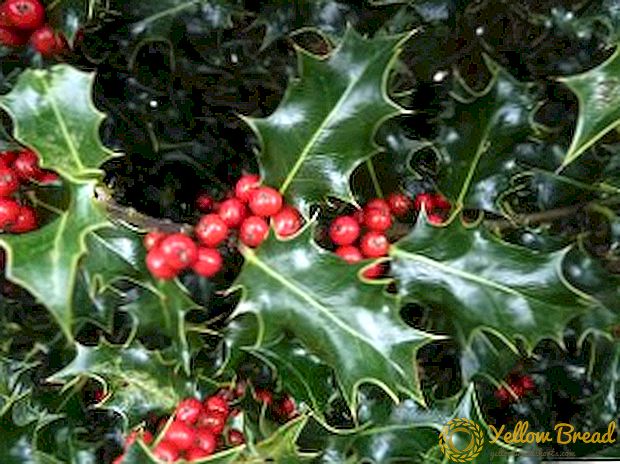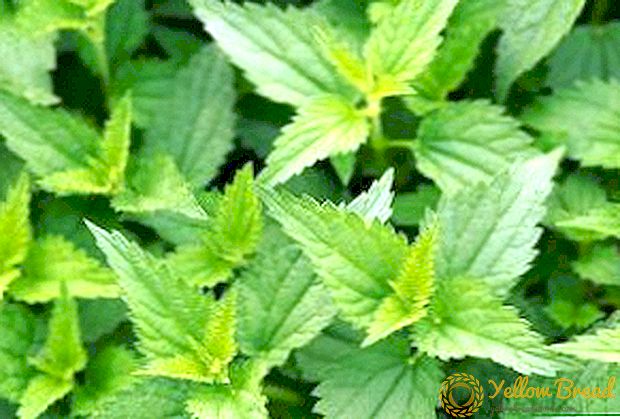 At one time, Shakespeare said: "Her white robe represents naivety."
At one time, Shakespeare said: "Her white robe represents naivety."
He addressed these words to a daisy - an annual or perennial flower.
This plant grows in the form of dense bushes with inflorescences that are red, white and pink.
Daisies are one of the first blooming at sunrise, so in some places they are called the "eye of the day."
- How to plant daisy seeds in open ground
- Seed treatment before planting
- Site selection and soil preparation
- Seed planting technology
- The combination of daisies with other plants
- How to care for daisies to achieve lush bloom
- How to water the daisies
- Top dressing
- Collection and storage of daisy seeds
- Wintering and frost resistance of perennial daisies
- Ways of breeding daisies at home
- Seeds
- Cuttings
- Division bush
- Daisies and pests of daisies, how to deal with them
How to plant daisy seeds in open ground
 Daisies are very cold-resistant, so they can be grown in almost any areas. Planting requires a sunny place and non-alkaline soil, which must be well loosened so that moisture does not linger in it.
Daisies are very cold-resistant, so they can be grown in almost any areas. Planting requires a sunny place and non-alkaline soil, which must be well loosened so that moisture does not linger in it.
Planting daisies with seeds is a simple matter, and the simplest and most common method involves planting them in open ground, although seedlings are often used.
Seed treatment before planting
Before planting, daisy seeds are covered with a special composition of trace elements that nourish them with beneficial substances and activate the growth of the plant. Thanks to the protective shell, the seeds become like balls, hence the name of the method - drazhirovanie.
Such manipulations with seeds allow the daisy to grow faster. In addition, the shell protects the seeds from the influence of pathogenic organisms, in particular from fungal, and some insect pests.
Often, the treated seeds are sown one by one and in comparison with the usual ones, they require more frequent watering. If moisture is not enough, the shell will not dissolve completely, which will affect the growth of the flower.
Site selection and soil preparation
 Growing a daisy is impossible without a lot of sunlight, so the place where you plant the flower should be well lit.
Growing a daisy is impossible without a lot of sunlight, so the place where you plant the flower should be well lit.
As for the ground, then the daisies are unpretentious. These flowers can grow on any garden soil, but if you can, it is better to choose light structured loams.
Before sowing seeds, you need to clean the soil from weeds with herbicides. After that, it should be loosened to a depth sufficient for air to reach the roots of the plant.
Seed planting technology
Once you have decided where to plant the daisies, you can proceed directly to the action itself. For planting are suitable as ordinary seeds, and dredge.
In the case of the usual, they are sown in special cassettes of 3-4 pieces and placed in the ground. After a month they will begin to germinate. Throughout that time, you need to maintain high humidity and soil.
 When the cotyledons open, it is necessary to reduce the humidity, but to prevent the soil from drying out. It is necessary to water only in the morning. The first top-dressing is done with low-concentration nitrogen-potash fertilizers. Gradually, given the power of flower growth, the concentration of fertilizer is also increased.
When the cotyledons open, it is necessary to reduce the humidity, but to prevent the soil from drying out. It is necessary to water only in the morning. The first top-dressing is done with low-concentration nitrogen-potash fertilizers. Gradually, given the power of flower growth, the concentration of fertilizer is also increased.
The best time for planting daisy seeds is the end of spring or the beginning of summer. At this time, the soil is warm enough and the seeds will germinate quickly.
The combination of daisies with other plants
Margarita flowers are perfectly combined with various spring flowers, for example, with tulips, primroses, hyacinths, daffodils, lilies of the valley, freezers, primulas. Small forget-me-nots, violets, viols, planted close to daisies, wonderfully set off their beauty and complement it.
How to care for daisies to achieve lush bloom
Caring for daisies in the open field does not require extra effort and hassle, as the plant is quite unpretentious in terms of growing. However, for better flowering there are still some tricks.
How to water the daisies
Daisies need regular watering. Especially important for them is moisture in dry weather, because in the heat the flowers slowly die. Before each irrigation, the soil should be well drained, without it, it will retain moisture, and the respiration of the root system will be incomplete, which will lead to the death of the plant.
Top dressing
 The first feeding of the flower should be done with a weak solution of nitrogen and potassium. The following top dressing should be carried out before flowering, and then, the flower is fed with a special mixture.
The first feeding of the flower should be done with a weak solution of nitrogen and potassium. The following top dressing should be carried out before flowering, and then, the flower is fed with a special mixture.
It includes: 2 tablespoons of nitrophoska and the composition Agricola-Fantasia diluted 10 liters of water This fertilizer must be watered daisy several times per season.
Also, you should pay attention to the mixture of potassium sulfate, ammonium nitrate and superphosphate (1: 1: 1), this composition has a positive effect on the growth of daisies.
Collection and storage of daisy seeds
Although daisies bloom almost at the same time, their seeds do not ripen at the same time. Because of this, the collection of seed material occurs as it ripens, about 1-2 times a week.
To collect the seeds, you need to pick faded buds and shake their contents onto paper. The seeds that were able to get need to be dried in a room with good ventilation. After they dry out, pour them into a paper bag and store in a dry, dark place.
Wintering and frost resistance of perennial daisies
For the winter, the plants need to be covered with spruce leaves, peat or fallen leaves, otherwise your daisy flower bed will freeze and die.
In the fall, the site should be mulched with a thick layer of humus, which will protect the root system of the flower from freezing in the frosty and snowless winter. The coating layer must be at least 1 centimeter.
 If you find that some bushes have begun to bulge out of the ground and have exposed roots, then you need to well promulcate the soil.
If you find that some bushes have begun to bulge out of the ground and have exposed roots, then you need to well promulcate the soil.
With the onset of spring, these flowers need to be transplanted to another place and dig a little deeper.
Ways of breeding daisies at home
How and when to plant daisies you already know, now let's look at how you can propagate a flower at home.
Seeds
Seeds are sown in open ground in early summer, when the soil is already warmed. It is necessary to sow superficially, that is, simply scatter the seeds on the ground, and then mulch with a layer of sifted soil or humus.
Cuttings
 By the end of May, you can begin reproducing the daisy by cutting. To do this, separate the young shoot with a sharp knife (it must have a axillary stick) and process it with a root.
By the end of May, you can begin reproducing the daisy by cutting. To do this, separate the young shoot with a sharp knife (it must have a axillary stick) and process it with a root.
Next, the shoot is planted in a cold greenhouse, deepening a kidney 1 centimeter into the ground. After two weeks, the stalk will take root and begin to germinate. Transplantation of cuttings of daisies washes to be carried out not earlier than the beginning of autumn.
Division bush
The division of the bush daisy occurs in early spring or at the end of flowering. For this, a well-formed plant is suitable that is not older than 3 years.
His dig and gently divided into parts. Each part must be with its spine. Leaves and buds need to be removed, and then to pick the roots of daisies.
Daisies and pests of daisies, how to deal with them
Daisy is resistant to various diseases, but sometimes it is affected by gray rot and powdery mildew. A flower can get sick because of:
- inadequate ventilation of the site and thickened planting;
- excess fertilizer;
- overmoistening of the soil and plants;
- large temperature difference.
 If you find powdery mildew in your flower garden, then use biological fungicides to eliminate it. In the case of such a scourge as gray rot, you should use "Fundazol", "Euparin" or "Skor". In addition, the diseased plant must be kept dry.
If you find powdery mildew in your flower garden, then use biological fungicides to eliminate it. In the case of such a scourge as gray rot, you should use "Fundazol", "Euparin" or "Skor". In addition, the diseased plant must be kept dry.Chemical and biological insecticides such as Lepidocid, Fitoverm, Bicol and Aktellik help from various caterpillars and slugs. You can also use "Metaldehyde" (copes well with slugs). It is important to adhere to the instructions during the use of drugs, otherwise there is a chance to harm the plants.
That's all, now you have the necessary knowledge to grow and care for these beautiful flowers. Following these simple rules, the flower will long delight you with its beauty.

